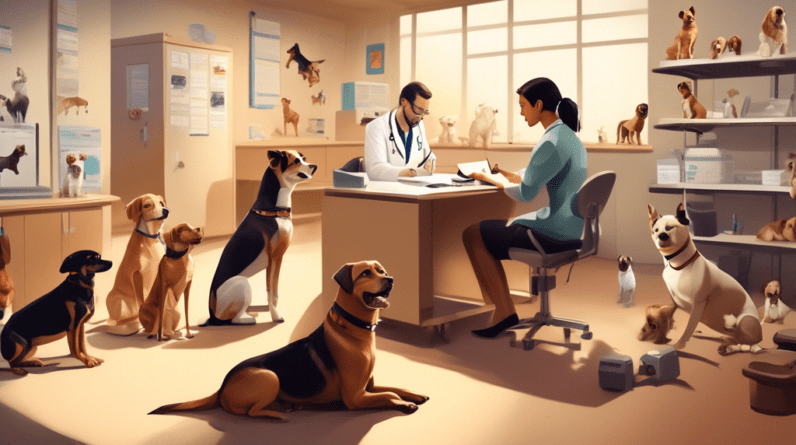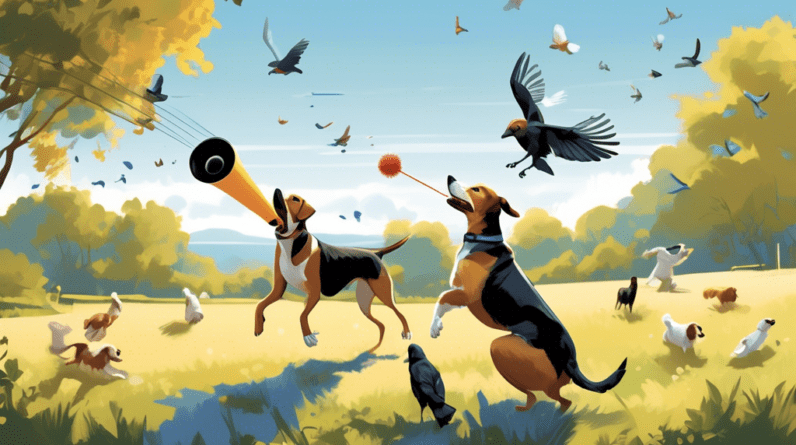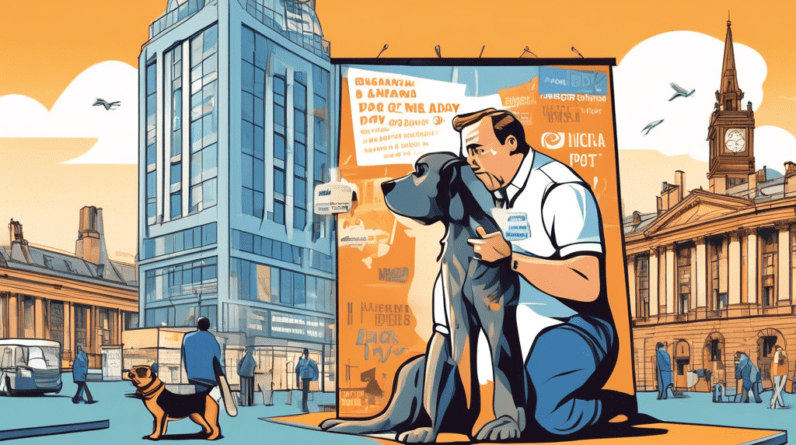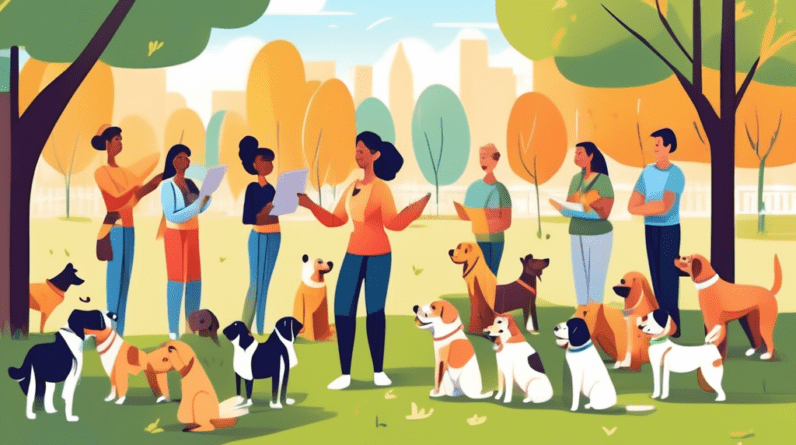
Urbanization, the process of population growth and migration from rural to urban areas, has significantly transformed our cities. As urban areas expand, it is crucial to understand how this shift impacts the well-being of various populations, including our furry companions. In this article, we will explore the effects of urbanization on dogs’ behavior and welfare, shedding light on the challenges they face and offering strategies to improve their lives.
1. Introduction
Urbanization refers to the increasing concentration of people in cities and the resulting changes in social, economic, and environmental aspects of urban areas. With more people migrating to cities, the urban landscape continues to evolve, presenting unique challenges for both humans and animals. Dogs, as social animals and our loyal companions, are directly affected by these changes. Understanding the effects of urbanization on their behavior and welfare is essential for ensuring their well-being.
2. Changes in Living Environment
One of the significant impacts of urbanization on dogs is the change in their living environment. As cities grow denser, living spaces for dogs become smaller, often limited to apartments or houses with limited yards. This reduced living space can lead to increased confinement, limiting dogs’ ability to freely move and explore their surroundings. Lack of adequate space may contribute to behavioral problems such as restlessness, hyperactivity, and frustration.
In addition to decreased living space, noise pollution is another prevalent issue in urban areas. Busy streets, construction sites, and constant traffic create a constant cacophony that can be overwhelming for dogs. The continuous exposure to loud noises can induce stress and anxiety, affecting their overall well-being.
Moreover, urban areas often lack green spaces and parks where dogs can engage in physical activities and experience nature. The absence of green areas deprives dogs of opportunities for exercise, mental stimulation, and socialization with other dogs and humans. The limited access to nature can result in a sedentary lifestyle and obesity, leading to various health problems for dogs.
3. Social Interactions and Behavior
Urbanization also alters the social interactions and behavior of dogs. In urban areas, dogs frequently encounter strangers during walks or in public spaces. This increased exposure to unfamiliar people can affect their temperament and socialization. Some dogs may become fearful or anxious in the presence of strangers, leading to defensive behaviors such as growling or even aggression.
Moreover, the abundance of dogs in urban areas can result in altered dog-dog interactions. In densely populated neighborhoods, dogs may experience more frequent and intense encounters with other dogs, which can lead to increased competition for resources and potential conflicts. These interactions can impact dogs’ social behavior, potentially exacerbating aggression or reactivity.
The limited living space and reduced opportunities for socialization in urban areas can also contribute to dogs’ behavioral issues. Dogs may exhibit excessive barking, separation anxiety, or destructive behaviors due to boredom and lack of mental stimulation.
4. Physical Health and Exercise
Urbanization poses challenges to dogs’ physical health and exercise routines. The restricted living environment and limited access to green spaces make it difficult for dogs to engage in regular physical activities. Dogs require adequate exercise to maintain a healthy weight, strengthen muscles, and prevent various health issues.
The lack of exercise opportunities in urban areas can lead to sedentary lifestyles, obesity, and associated health problems such as diabetes, heart disease, and joint issues. Additionally, obesity can exacerbate existing health conditions and reduce dogs’ overall quality of life.
5. Mental Stimulation and Enrichment
In addition to physical exercise, dogs also require mental stimulation and enrichment to thrive. Unfortunately, urban environments often lack opportunities for dogs to engage their senses and fulfill their cognitive needs. The absence of natural stimuli, such as the sights and smells of the outdoors, can result in dogs experiencing boredom and frustration.
Without proper mental stimulation, dogs may resort to destructive behaviors, such as chewing furniture or digging. These behaviors are often a manifestation of their need for mental engagement and an outlet for their energy. Providing appropriate mental enrichment, such as puzzle toys or scent games, can help alleviate these issues and promote a healthier state of mind for urban dogs.
6. Noise Sensitivity and Anxiety
The constant noise in urban environments can have a significant impact on dogs’ stress levels. Dogs have keen hearing, and they are more sensitive to certain frequencies and loud sounds than humans. The continuous exposure to sirens, car horns, and other urban noises can lead to heightened anxiety in dogs.
Noise sensitivity can manifest in various ways, including trembling, panting, or hiding. Some dogs may even develop noise phobias, where they exhibit extreme fear and panic during loud events such as fireworks or thunderstorms. The chronic stress caused by noise pollution can have detrimental effects on dogs’ overall well-being and may require intervention to manage their anxiety.
7. Human-Animal Bond
The relationship between dogs and their owners is also influenced by urbanization. In urban areas, pet owners often have busier lifestyles, with long working hours and other commitments. This can result in less time spent with their dogs and increased reliance on dog walkers, daycare centers, or pet sitters.
While these services can provide necessary care, they may not always fully meet dogs’ social and emotional needs. Dogs are highly social animals and thrive on companionship and interaction with their owners. The reduced time spent together may impact the bond between humans and dogs, potentially leading to feelings of loneliness and separation anxiety.
8. Strategies to Improve Dogs’ Welfare in Urban Areas
Recognizing the challenges faced by dogs in urban areas, several strategies can be implemented to enhance their welfare:
- Creating dog-friendly urban spaces: Designing cities with designated dog parks, green areas, and accessible walking paths can provide dogs with safe places to exercise, socialize, and explore.
- Promoting responsible dog ownership: Educating dog owners about the importance of providing adequate exercise, mental stimulation, and socialization for their pets can help improve dogs’ welfare.
- Providing mental and physical enrichment opportunities: Encouraging the use of interactive toys, puzzle feeders, and training activities can stimulate dogs’ minds and alleviate boredom in urban environments.
Implementing these strategies can enhance the quality of life for dogs in urban areas, fostering their physical and mental well-being while strengthening the bond between humans and their furry companions.
9. Conclusion
Urbanization has brought about significant changes to our cities, affecting not only human populations but also our canine friends. The effects of urbanization on dogs’ behavior and welfare are multifaceted, ranging from changes in living environment and social interactions to physical and mental health challenges. Understanding these effects is crucial for ensuring the well-being of urban dogs.
By implementing strategies such as creating dog-friendly urban spaces, promoting responsible dog ownership, and providing mental and physical enrichment opportunities, we can address the challenges faced by dogs in urban areas. These efforts contribute to creating a harmonious and fulfilling urban environment for both humans and their beloved furry companions.
FAQs
- How does urbanization affect dogs’ behavior? Urbanization can lead to changes in dogs’ behavior, such as increased encounters with strangers, altered dog-dog interactions, and heightened stress levels due to noise pollution.
- Can urbanization cause health problems for dogs? Yes, urbanization can contribute to health issues in dogs, including obesity, diabetes, heart disease, and joint problems, due to reduced opportunities for exercise and limited access to green spaces.
- What can I do to improve my dog’s well-being in an urban area? You can enhance your dog’s well-being in urban areas by providing regular exercise, mental stimulation, socialization opportunities, and utilizing enrichment toys and activities.
- Are there specific challenges for dog owners in urban areas? Yes, dog owners in urban areas may face challenges such as limited living space, increased reliance on dog walkers, and reduced time spent with their dogs due to busy lifestyles.
- How can dog-friendly urban spaces benefit dogs? Dog-friendly urban spaces, such as designated dog parks and green areas, provide dogs with safe places to exercise, socialize, and explore, promoting their physical and mental well-being.






